
Tony Hawk's Pro Skater, released as Tony Hawk's Skateboarding in the UK, Australia, New Zealand, and parts of Europe, is a 1999 skateboarding video game developed by Neversoft and published by Activision. It is the first installment in the Tony Hawk's series. It was released for the PlayStation on September 29, 1999 and was later ported to the Nintendo 64, Game Boy Color, Dreamcast, and N-Gage.

Longboarding is a variation of skateboarding typified by the use of longer boards ("decks") with longer wheelbases and softer wheels. While longboards vary widely in shape and size, compared to street skateboards longboards are designed to be more stable at speed and to have more traction due to larger wheel sizes and softer wheel durometers. While standard street skateboards may typically be between 28 and 34 inches long, longboards can range anywhere from 32 to 50 inches in length. Ride characteristics of longboards generally differ from that of street skateboards due to the use of specialized longboard trucks that have different properties than those typically used with skateboards; while street skateboards use "traditional kingpin" (TKP) trucks that are optimized for tight turning radii, ollie and flip tricks, slides, grinds, and transition skating, longboards are typically paired with "reverse kingpin" (RKP) trucks that are designed for increased stability at higher speeds, more "surfy" carving characteristics, and/or greater ride comfort for commuting over longer distances.

F-Zero GX is a 2003 racing video game developed by Amusement Vision and published by Nintendo for the GameCube console. It runs on an enhanced version of the engine used in Super Monkey Ball. F-Zero AX, the arcade counterpart of GX, uses the Triforce arcade system board conceived from a business alliance between Nintendo, Namco and Sega. Published by Sega, it was released alongside GX in 2003.

Alan "Ollie" Gelfand is an influential American skateboarder, racing driver, and entrepreneur credited with inventing the ollie, the foundational skateboarding trick.

Tony Hawk's Underground is a 2003 skateboarding video game and the fifth entry in the Tony Hawk's series after Tony Hawk's Pro Skater 4. It was developed by Neversoft and published by Activision in 2003 for the GameCube, PlayStation 2, Xbox, and Game Boy Advance. In 2004, it was published for Microsoft Windows in Australia and New Zealand as a budget release.
The Initial D video game series, known in Japan as Initial D Arcade Stage, is an arcade racing game series developed by Sega, based on the anime and manga series Initial D. In the United States and Europe, the game series is simply known as Initial D.
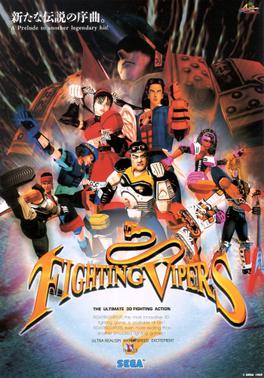
Fighting Vipers is a 1995 fighting video game developed by Sega AM2. A 3D fighter, it uses the same game engine as AM2's Virtua Fighter 2 (1994) but features enclosed arenas and an armor mechanic, and was targeted more towards Western audiences, using a U.S. setting and more freeform styles of martial arts.
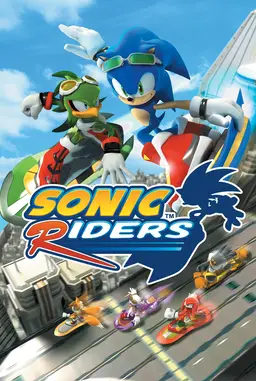
Sonic Riders is a racing video game developed by Sonic Team and Now Production and published by Sega for the GameCube, PlayStation 2, and Xbox. In the game, the player controls characters from the Sonic the Hedgehog series on hoverboards and competes against opponents—either controlled by computers or other players—in races and battles. The game was released in February 2006 in Japan and North America, with a European release following the next month and a Windows version at the end of the year. A Game Boy Advance version developed by Backbone Entertainment was canceled.
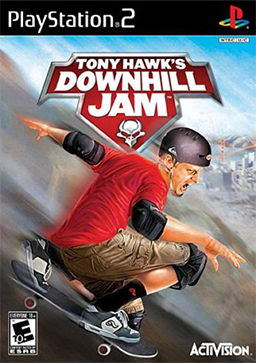
Tony Hawk's Downhill Jam is a skateboarding video game in the Tony Hawk's series. The game, named after the level "Downhill Jam" from Tony Hawk's Pro Skater, was published by Activision in 2006 as a timed Nintendo exclusive for the Nintendo DS, Game Boy Advance, and Wii. In 2007, it was published for the PlayStation 2. It is a spin-off in which accompanies the release of Tony Hawk's Project 8, which is conversely available on non-Nintendo systems.

A slide is a skateboarding trick where the skateboarder slides sideways either on the deck or the trucks.
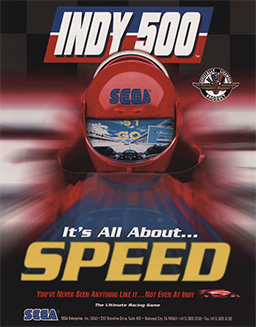
Indy 500 is a 1995 arcade racing game developed by Sega AM1. Based on the IndyCar Series, the game possesses a license from the Indianapolis Motor Speedway, home of the Indianapolis 500, and includes the speedway as one of its courses. Indy 500 was AM1's second game developed using 3D computer graphics and their first to utilize color textures. While planned as a Model 3 arcade system board release, delays in the hardware's completion led to use of the Model 2 instead. A Sega Saturn port was planned, but later canceled. Reception to Indy 500 was mixed, with some critical comparison to other games such as Sega AM2's Daytona USA and Namco's Ace Driver and Rave Racer.
Tony Hawk's is a skateboarding video game series published by Activision and endorsed by the American professional skateboarder of the same name. The series was primarily developed for home consoles by Neversoft with an annual release schedule from launch to 2007, until Activision transferred the franchise to Robomodo in 2008, who developed the franchise on a non-annual release basis until 2015 when Activision and Hawk's license expired, leaving the future of the series uncertain. In 2020, the series returned under Activision with a remake of the original two games in the series, with development handled by Vicarious Visions. The series has spawned a total of 20 games.

Top Skater is an arcade skateboarding sports video game released by Sega in 1997, and built on the Sega Model 2 hardware. It was one of the first arcade games to feature a skateboard controller interface. The game was directed by Kenji Kanno.
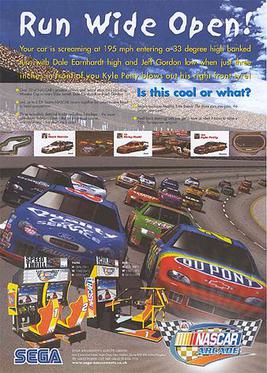
NASCAR Arcade, initially known as NASCAR Rubbin' Racing outside North America, is a 2000 racing arcade game developed by Sega Rosso and released by Sega. It was produced at the suggestion of producer Kenji Arai, and the soundtrack was produced by Jun Senoue. The game is based on NASCAR, and carries an official license with permission from EA Sports, which permitted Sega to develop the game as a coin-op only title.

Skate 2 is a skateboarding video game developed by EA Black Box and published by Electronic Arts. The game was released worldwide in January 2009 for PlayStation 3 and Xbox 360 after the spin-off title Skate It. It is the sequel to 2007's Skate and the third installment in the Skate series overall.
A skateboard style refers to the way a skateboarder can ride a skateboard. Styles of skateboarding have evolved and are influenced by a number of factors including sociocultural evolution, mass media, music, technology, and corporate influence.

Initial D Extreme Stage is a racing game developed by Sega for the PlayStation 3. It is based on the Japanese manga Initial D created by Shuichi Shigeno in 1995.

Tony Hawk's Pro Skater HD is a 2012 skateboarding video game in the Tony Hawk's series. Developed by Robomodo and published by Activision, Pro Skater HD is a high-definition remake of classic levels from Tony Hawk's Pro Skater, Pro Skater 2, and, via download, Pro Skater 3. It was released in 2012 for Xbox 360 through Xbox Live Arcade on July 18, for PlayStation 3 through PlayStation Network on August 28 and Steam on September 18. The game was delisted from Steam and all other digital marketplaces on July 17, 2017.
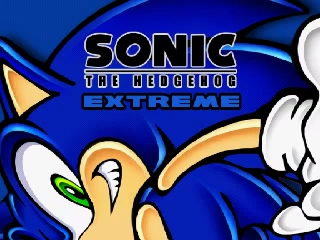
Sonic Extreme was a prototype video game created by Vision Scape Interactive in May 2003. Proposed as a spin-off to Sega's Sonic the Hedgehog series, Sonic Extreme featured Sonic and Shadow riding hoverboards in a Green Hill Zone-themed open world, with gameplay likened to Tony Hawk's Pro Skater. It featured three gameplay modes, which included searching for keys and Chaos Emeralds and fighting or racing another player. Vision Scape created the prototype while it made cutscenes for Sonic Heroes (2003); it was developed on the Xbox with intent to port it to the GameCube and PlayStation 2. The prototype was assembled using the RenderWare game engine and assets from prior Vision Scape and Sonic games.
Arcane Kids is an independent video game studio based in Los Angeles, California. They are a collective of developers, largely known for creating surreal and humorous video games using the Unity engine. As of 2015, the group consisted of 5 members, including Ben Esposito, Russell Honor, Tom Astle, Jacob Knipfing, and Yuliy Vigdorchik. The name "Arcane Kids" was derived from a mysterious re-writable compact disc with the phrase inscribed on top of it, which was found lying in a patch of dirt.
















